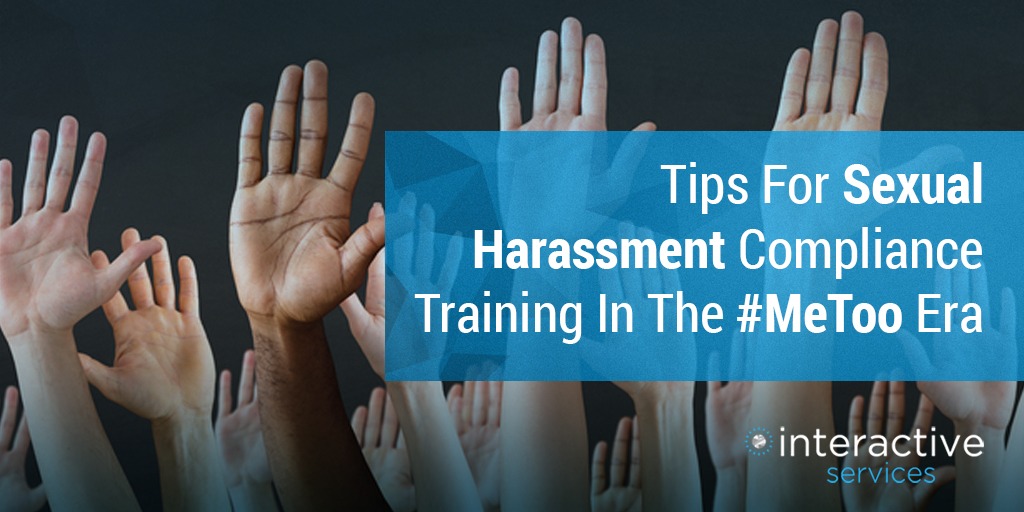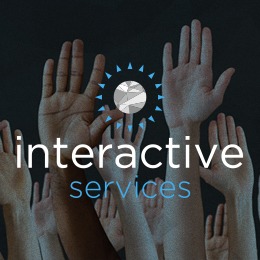
In the last year or so, the #MeToo movement has shed light on just how common sexual harassment is in the workplace. From celebrities to day-to-day workers, thousands of people – women, in particular – have shared stories about how they have been harassed in the workplace.
The statistics are staggering. Surveys show that up to 81% of women have experienced harassment – sexual and otherwise – in the workplace. Clearly, something is wrong with the way that we are educating employees about sexual harassment.
While sexual harassment training alone may not be enough to eliminate the conditions that allow for workplace harassment overnight, choosing the right compliance program is a good start.
A modern sexual harassment compliance training program, built for the #MeToo era, could help employees recognize problematic behavior in others, and ensure that harassment of any kind is not tolerated at the workplace.
What should this program look like? In this article, we’ll discuss a few key things you should be doing when holding sexual harassment compliance training in the #MeToo era.
Let’s get started.
1. Make Compliance Training Mandatory For Everyone In The Company
One of the most important things that you can do when it comes to sexual harassment compliance training is to get buy-in from employees at every level of the company.
That means that your sexual harassment compliance training must be mandatory, and even those who may have already taken a course on this subject in the past should be required to participate.
From entry-level workers to C-suite executives, it must be emphasized that everyone has a responsibility to recognize harassment, discourage inappropriate behavior, and report instances of harassment when they occur.
Building a better workplace requires the help of everyone in your company – and your sexual harassment compliance training needs to reflect this.
2. Ensure That Your Employees Understand What Constitutes Sexual Harassment

Some types of sexual harassment are obvious. Inappropriate physical contact, unwanted sexual advances, sexual gestures, sexual jokes and comments, explicit, inappropriate statements – it’s fairly easy to recognize these problems.
But some types of sexual harassment are more pernicious and difficult for employees to understand. Things like male employees asking female employees out on dates, commenting about their appearance excessively, or sending too many messages to a person who does not wish to interact with them – under the right circumstances, these actions could constitute sexual harassment.In your sexual harassment compliance training, it’s important to emphasize that sexual harassment does not just include obvious discrimination and harassment – but any action or conduct that a person in the workplace feels is unwelcome, hostile, or directed at them because of their sex.
3. Focus On The Importance Of Reporting Harassment

One of the most shocking revelations of sexual harassment at the workplace in the #MeToo era is how little it’s reported – and how often women are not taken seriously by management when they bring up their concerns. It’s been estimated that more than 75% of all workplace sexual harassment incidents go unreported.
This is why you need to make sure that your employees understand how important it is to report harassment – not just when it happens to them, but when it happens to anyone in the workplace.
Many women are afraid to report sexual harassment due to fear of retaliation, particularly from management. Your training should emphasize that complaining about sexual harassment is a protected activity, and that it is illegal for employers to retaliate when an employee complains about sexually inappropriate conduct.
4. Ditch PowerPoints And Outdated Slides – Focus On Authenticity, Real World Examples
 Decades-old PowerPoints, slides and other training programs are not the best way to engage your employees. To get them to take this subject seriously, you must use authentic, real-world examples to which they can relate – not scripted simulations or examples of caricatured behavior.
Decades-old PowerPoints, slides and other training programs are not the best way to engage your employees. To get them to take this subject seriously, you must use authentic, real-world examples to which they can relate – not scripted simulations or examples of caricatured behavior.
There are already many real-world examples of sexual harassment – and you should integrate these into your compliance training program.
By reading about harassment and seeing testimonials from real people, your employees will be able to develop a better knowledge of what sexual harassment looks like in real life – and this, in turn, will lead to a healthier workplace environment.
5. Make Sexual Harassment Training An Ongoing Process
The actual laws and regulations about whether or not you need to provide continuous sexual harassment training depend on your state. However, we believe that sexual harassment compliance training should be an ongoing process – no matter the state in which your business operates.
Why? Because until sexual harassment no longer happens in the workplace, there is room for improvement. If you want your employees to take sexual harassment seriously and work together to create a more welcoming work environment with no tolerance for harassment, regular compliance training is the best option.
6. Make Your Policies And Expectations Clear

Building a better corporate environments starts with making sure your employees know what’s expected of them. By the end of your sexual harassment compliance training sessions, they should have a clear understanding of:
- What constitutes sexual harassment
- Behavioral expectations and guidelines for your employees
- Consequences for non-compliance
- The details of your corporate sexual harassment policy
- Investigation procedures for complaints
- Methods of reporting complaints
Sharing this information and making it clear during training ensures that there is no possible way that employees can misunderstand your policies and attitudes about harassment in the workplace.
Make Your Company A Better, Safer Place To Work In The #MeToo Era With These Tips
Eliminating sexual harassment in the workplace will not happen overnight. But this should be our goal – and it all starts with better compliance training.
By empowering your employees with the tools to understand and report sexual harassment, you can create a healthier work environment, minimize your risk of legal liability due to harassment, and much more. Think about how you can apply these tips to your own sexual harassment compliance training, and start building a better workplace today.
